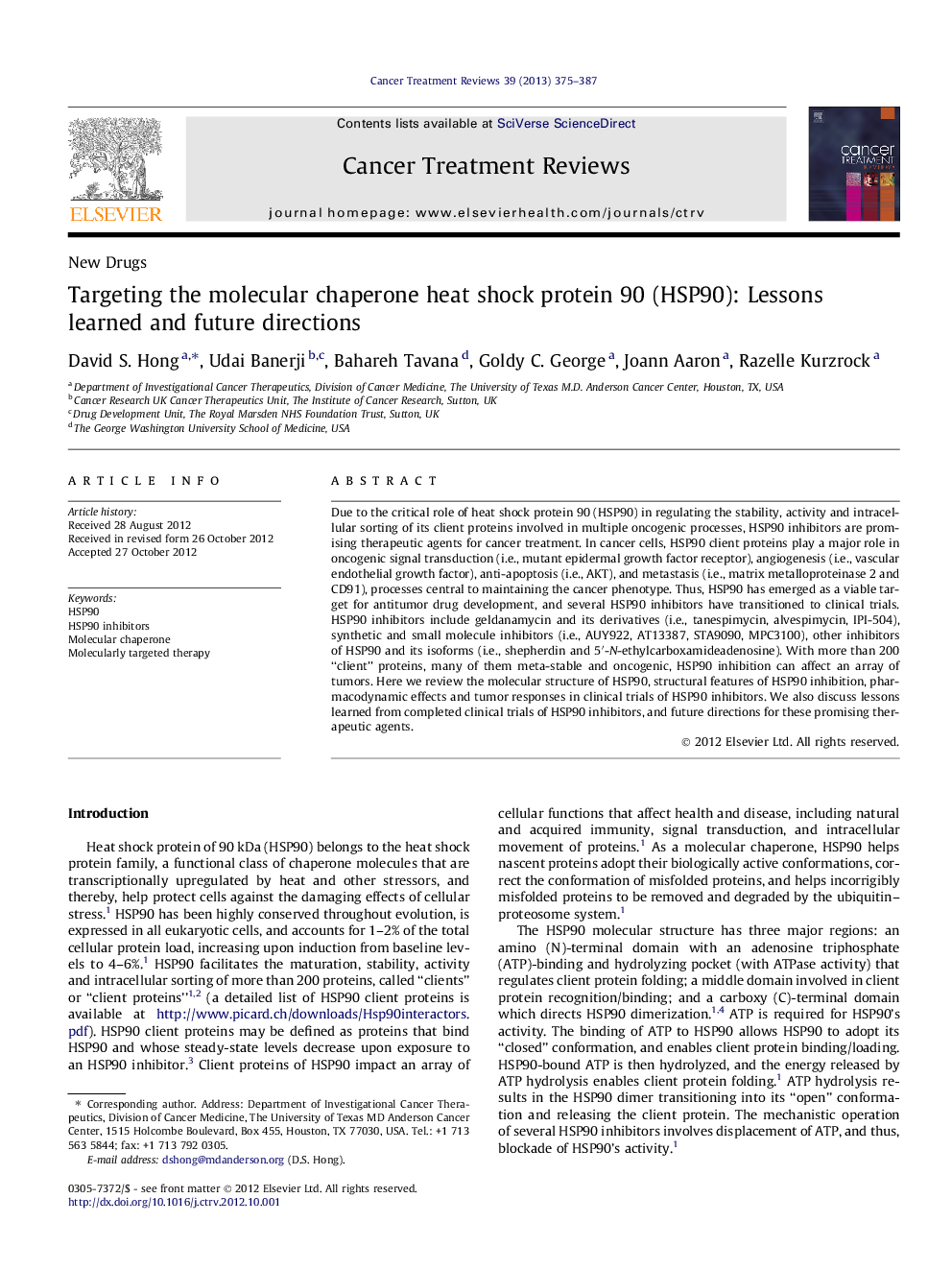| Article ID | Journal | Published Year | Pages | File Type |
|---|---|---|---|---|
| 6190667 | Cancer Treatment Reviews | 2013 | 13 Pages |
Due to the critical role of heat shock protein 90 (HSP90) in regulating the stability, activity and intracellular sorting of its client proteins involved in multiple oncogenic processes, HSP90 inhibitors are promising therapeutic agents for cancer treatment. In cancer cells, HSP90 client proteins play a major role in oncogenic signal transduction (i.e., mutant epidermal growth factor receptor), angiogenesis (i.e., vascular endothelial growth factor), anti-apoptosis (i.e., AKT), and metastasis (i.e., matrix metalloproteinase 2 and CD91), processes central to maintaining the cancer phenotype. Thus, HSP90 has emerged as a viable target for antitumor drug development, and several HSP90 inhibitors have transitioned to clinical trials. HSP90 inhibitors include geldanamycin and its derivatives (i.e., tanespimycin, alvespimycin, IPI-504), synthetic and small molecule inhibitors (i.e., AUY922, AT13387, STA9090, MPC3100), other inhibitors of HSP90 and its isoforms (i.e., shepherdin and 5â²-N-ethylcarboxamideadenosine). With more than 200 “client” proteins, many of them meta-stable and oncogenic, HSP90 inhibition can affect an array of tumors. Here we review the molecular structure of HSP90, structural features of HSP90 inhibition, pharmacodynamic effects and tumor responses in clinical trials of HSP90 inhibitors. We also discuss lessons learned from completed clinical trials of HSP90 inhibitors, and future directions for these promising therapeutic agents.
